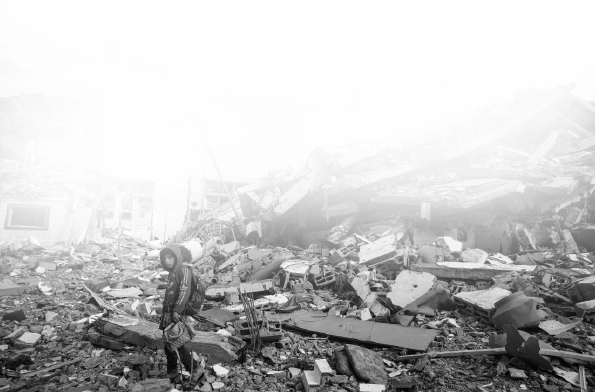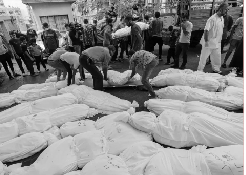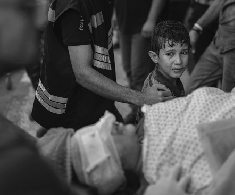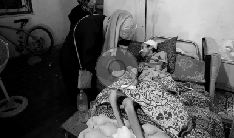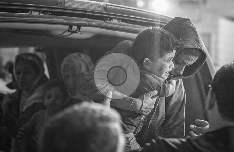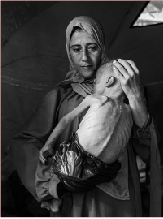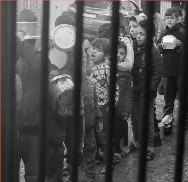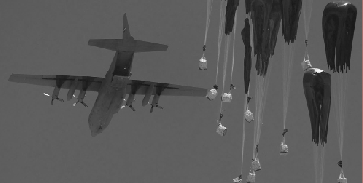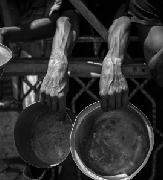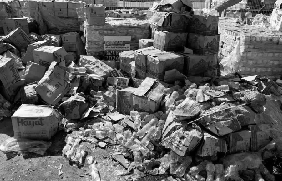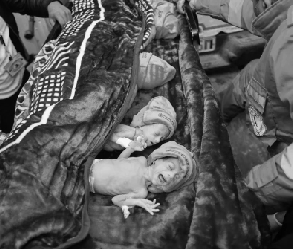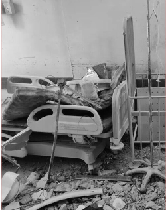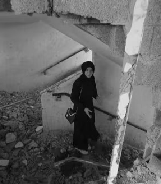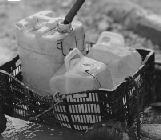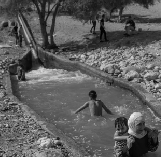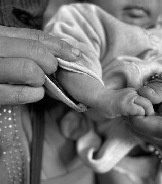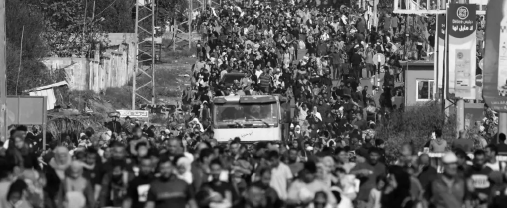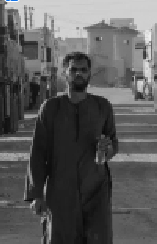Palestine Under Erasure
A Photo Essay establishing the genocide in Palestine
t 3:30 a.m, a massive explosion tore through the night, shaking the tent where I slept. Stones crashed against the fabric as I hurried outside, choking on dust and smoke. There, by the roadside, I found my wife, Gadhar, collapsed and injured. Recalls Imad A-Radi. Not only Imad, but thousands of others have borne the unbearable hardships endured over the past years.
The fabric of that tent, patched countless times, had become more than shelter it was a symbol of resilience. Imad's hands trembled as he cradled his wife's head, whispering prayers while scanning for help that might never come.
Mornings in Gaza no longer begin softly; they start with the blare of sirens and the thunderous sounds of bombardments from Israeli forces. Nights end amid explosions and uncertainty, as civilians try to survive relentless airstrikes. To the date, more than 60,000 people have lost their lives, and over 139,000 have suffered injuries. The violence has forced nearly 1.9 million individuals about 90% of Gaza's population into internal displacement, leaving them homeless and desperate.
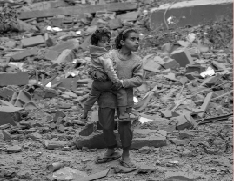
The statistics fail to capture individual stories. Fatima Al-Zahra, a teacher turned refugee, clutches a photograph of her former classroom now rubble. She speaks of students with tears streaming down her cheeks, recounting how young Omar raised his hand enthusiastically, how Layla shared her lunch, how Ahmed dreamed of becoming a doctor. These children now sleep on concrete floors in overcrowded shelters.
Displacement camps sprawl across any available space parking lots, beaches, mosque courtyards. Families of eight crowd into spaces for two. Muhammad Abu Salem, 73, sits on a thin blanket, joints aching from sleeping on hard ground. His five-year-old grandson asks when they can go home, unaware that home exists only in fading photographs.
The destruction around is overwhelming, schools lie in ruins, hospitals can barely function, and humanitarian relief centers are wrecked. Buildings, central to the community's existence, have been flattened, symbolizing the shattered lives they once sheltered. Food scarcity and famine worsen the crisis, with children suffering acute malnutrition and countless people battling diseases exacerbated by shortages of medicine. The toxic smoke from bombs and missiles lingers, mixing with the air these trapped civilians breathe daily.
Al-Shifa Hospital operates with failing generators, plunging surgeries into darkness. Dr. Samir Khalil performs operations by flashlight, watching patients die from treatable conditions as supplies remain trapped at borders. The pediatric ward echoes with cries of malnourished infants.
Targeted water treatment plants leave the population dependent on contaminated sources. Children develop severe gastroenteritis, their bodies unable to fight infections that would be minor elsewhere.
Ali Jadalullah, a Palestinian photojournalist, shares his struggle to capture this devastation. He recounts deleting many of his images, feeling they failed to convey the full horror he experienced first-time. His words testify that no lens can truly grasp the depth of destruction and human suffering.
Ali's cracked camera has become both weapon and burden. Each photograph carries the weight of testimony. He describes photographing a child's pink shoe protruding from concrete slabs that once formed a home. His memory card holds the last visual records of extinct families, of neighborhoods now ghost towns.
Despite these facts, the international response remains fragmented, and media coverage often obscures the scale of the crisis. Yet, it is vital that the world hears these stories. Bearing witness, raising awareness, and standing in solidarity, even if only through a single hashtag is essential. The truth of Gaza's people needs to be seen, spoken, and never forgotten.
Diplomatic halls where Gaza's fate is debated remain distant from its reality. Politicians speak of "proportional responses" while children learn to distinguish aircraft by sound. Social media algorithms bury testimonies beneath trending topics, yet voices persist poets sharing verses by candlelight, doctors posting between surgeries.
The very act of living in Gaza has become an act of defiance. Every breath drawn in the dust-filled air, every step taken over shattered concrete, is a testament to an indomitable will to exist against all odds. The psychological scars run deeper than any physical wound; children draw pictures of bombs and rubble, their innocence stolen by the omnipresent threat of death. Dreams of a future, once vibrant, are now overshadowed by the immediate, desperate need for survival. The vibrant culture, the rich history, and the communal bonds that once defined Gaza are under relentless assault, systematically dismantled brick by agonizing brick.
Children's artwork tells stories words cannot. Crayon drawings show fighter jets raining destruction on stick families. Houses appear as geometric ruins, windows replaced by flames. These young artists have never known peace.
Teachers struggle to provide normalcy while answering impossible questions: "Why do planes come at night?" "When will bombs stop?"
Traditional dabke dance now occurs in refugee camps as cultural preservation. Elderly men teach younger generations steps their grandfathers taught them, ensuring Gaza's cultural heartbeat will pulse through survivors.
The world watches, some with indifference, others with fleeting outrage, but the concrete actions needed to halt this catastrophe remain tragically insufficient. The international community's fragmented response only prolongs the agony, allowing the systematic destruction to continue. The media, often selective in its portrayal, struggles to convey the sheer magnitude of the human suffering, reducing lives to statistics and tragedies to headlines. But the faces of Gaza's children, the tear-streaked cheeks of its mothers, and the silent despair of its fathers demand more than fleeting attention. Their stories are a collective plea, a desperate cry for humanity to awaken, to recognize the deliberate eradication underway, and to act decisively. To forget Gaza is to betray its people, to allow their suffering to become merely a footnote in history. The truth, however painful, must be confronted, amplified, and etched into the global conscience, for the very soul of humanity depends on our willingness to truly see and respond to this atrocity.
International aid arrives with restrictions that render it inadequate. Medical supplies expire while patients die. Food distributions create stampedes as families fight for sustenance. News cycles move from crisis to crisis, leaving Gaza's story half-told. Yet Gazans become their own journalists, archivists of destruction. WhatsApp messages become historical documents; every photograph shared becomes resistance against erasure.
he echoes of explosions reverberate across Gaza's ruins and within the world's moral conscience. Each day solidifies the conviction that this is a systematic attempt to extinguish a people. The urgent plea for intervention from a devastated population, clinging to hope, must be heard and acted upon, ensuring their truth is never forgotten.
The rubble will someday be cleared, but the moral rubble of global inaction will remain. Gaza's children will carry these memories into adulthood, becoming tomorrow's leaders shaped by this crucible. Their testimonies will outlast political calculations, their voices echoing through history.
Gaza's story is about the boundaries of human compassion, the limits of international law, and whether humanity possesses the moral clarity to act. The dawn comes again to Gaza, rising over a landscape transformed by loss. Yet still it rises, carrying persistent hope that someone is listening, someone cares, someone will act.

